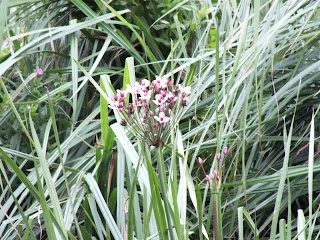ALWAYS THE HEADLINER, ENTER,
STAGE LEFT, THE GREY ASSASSIN
Dunstall Park, August 22nd
09.30 to 10.45, close, dull, calm, warm.
There are preparations for a rock concert near the grandstand, the stage is being set up and large trucks are disgorging sound equipment, lights and other gear (it seems Scouting For Girls are to perform after the evening race meeting. I was half expecting lines of tents, with fresh-faced youngsters washing in cold water and practising reef knots). The roadies haven't long started, so there's time for a look at the lake before sound checks make things difficult. It's all quiet, three female Teal sleep near the island, adult Moorhen shepherd two broods of chicks feeding along the shoreline, a single Lapwing stands in the shallows, while a Grey Wagtail and a juvenile Pied Wagtail pick their way round the water's edge. Silver birches by the Smestow brook overflow weir are attracting adult and juvenile Greenfinch and Goldfinch, with single Common Whitethroat and Chiffchaff flitting in and out of nearby bushes. An adult Grey Heron glides in to join c.50 Black Headed Gull, which are bathing and preening. A last look across the water, and there's movement on exposed mud near the island, a small bird bending forward to feed, almost certainly a Little Ringed Plover on passage. Better check it, so bins resting on a fence post, yes, it's an LRP, a juvenile. OK, turn to go, when suddenly to the left a shape flashes past no more than three metres away at head height, almost touching the metal fencing, past in an instant, compact, grey, flattening out over the lake and curving upwards, something's being chased, something's flying for its life. The unidentified quarry makes it to the oak copse, its pursuer banking away, gaining height and turning effortlessly to fly back, stiff wingbeats now almost in slow motion, other birds shooting away in all directions, gulls wheeling, calling, and Starling swirling in defensive waves. The hunter eases its way back over the lake side, looking down and around, hooked bill, black moustache against the light side face, an adult Peregrine, powerful, intimidating, now climbing steadily away from the pandemonium it has caused, circling higher and higher over the grandstand, its dark distinctive shape sharp against the grey-white clouds. Two tiny dots swoop and dive around it, House Martin obeying their instincts as they try to drive it away, and the falcon eventually sets course towards the south west, flying purposefully away over the Farndale housing estate and disappearing over the edge of the city. Judging by its size it was a probably a male, maybe even a locally bred bird, as nesting has become more and more widespread in recent years across the Birmingham/Black Country conurbation. The species' recovery from its disasterous pesticide-induced decline in the early 1960s has been dramatic and well-documented, with cities and towns including Birmingham and Walsall now boasting nesting pairs on cathedrals, churches and other prominent buildings. Birds are seen in all months over the Smestow Valley, and regularly hunt over neighbouring South Staffordshire and East Shropshire where pigeon-rich fields provide a reliable food source, particularly in winter. Maybe our own city will in the not too distant future provide a home for this top predator. Here's hoping . . .
(NB. Dunstall Park is a commercial restricted site. Access is strictly controlled).
































